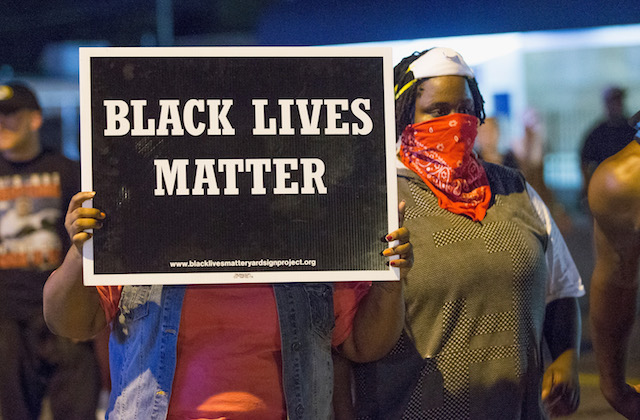Filming from within the Ferguson Uprising presented both emotional and conceptual challenges for the creative team behind the new documentary, "Whose Streets?" Four members of the production team elaborate on those difficulties in an interview published by Remezcla yesterday (February 20).
Debut feature film directors Sabaah Folayan and Damon Davis, alongside photography director Lucas Alvarado-Farrar and co-producer Chris Renteria, told Remezcla about the personal difficulties they endured filming during the unrest around Michael Brown‘s 2014 death at the hands of ex-Ferguson police officer Darren Wilson. Alvarado-Farrar discussed the difficulty of deciding when to film:
It was difficult on a number of different levels. Both from the sense of respecting people and their space. Knowing when to not shoot something and to turn the camera off. When to just be human and witness, even if that means we’re missing amazing moments for the film. And just the day to day, of getting up and realizing that every moment we were there was a piece of a long history of oppression. And having to be in the middle of that while being truthful to that without exploiting it. There are plenty of moments that were extremely emotional, difficult to shoot, period. Just being in a space where people are opening up so raw. The camera’s a strange disconnect. It’s a great tool, but it also builds a wall between you being a human and the person that you’re shooting.
Davis, a St. Louis native, builds on this participant-observer distinction with his explanation of how the experience of filming the documentary has stayed with him:
One of the toughest moments for me is that we personally have not unpacked the things that we have gone through. An overarching thing that I have had to struggle with from the beginning is that this is my home. It’s where I’m from. When we’re in the editing room, asking like what do we show, consciously thinking what we would put out, being very conscious of that line of being an audience but also being the subject, or of being really close to the subjects in the film. I kept thinking about my community, what is this going to do for my community? That’s the toughest day-to-day battle.
Davis and the other interviewees brought this community-centric focus to the film, which follows activists and residents as they protest police violence in the face of militarized police tactics. "This was not a film about law enforcement," Folayan says of the movie’s conceptual emphasis. "This was a film about the experience of living under heavy militarization in St Louis. So a person who is critical of that may need to see another film about law enforcement."
Movie distributor Magnolia Pictures acquired "Whose Streets?" earlier this month and plans to release the film this summer, to coincide with the third anniversary of Brown’s killing.
Read the full interview here.
